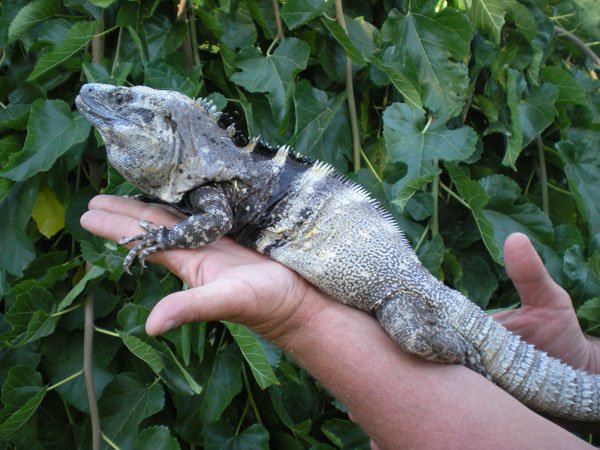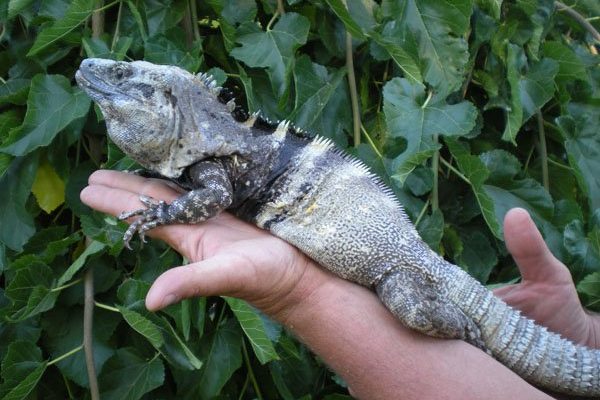
Imagine you’re trying to move a cat from the couch to the kitchen. You wouldn’t just grab the cat and go, right? You’d make sure they’re comfortable, familiar with you, and safe from harm. Well, it’s pretty similar with iguanas. Knowing how to handle them, what they like, and what stresses them out can make a world of difference in your relationship. So, let’s dive into the ins and outs of safely managing your spiny-tailed iguana.
Understanding Your Spiny-Tailed Iguana’s Behavior
Before you pick up your iguana, it’s essential to understand their unique traits. Spiny-tailed iguanas, also known as *Ctenosaura*, are known for their curious nature and strong territorial instincts. When you first bring one home, they might be a bit skittish. It’s like being the new kid at school; they need time to adjust.
You might notice that your iguana tends to hide or stay still when feeling threatened. This behavior is instinctual, as they rely on camouflage to blend into their environment. It’s important not to force interaction. Instead, let your iguana explore its surroundings at its own pace. Gradually, as they become comfortable with their space and you, they’ll likely show more interest in being handled.
Positive reinforcement can go a long way here. You can try offering treats like leafy greens or fruits to create a positive association with your presence. Remember, patience is key. Just like you wouldn’t rush a friendship, take your time building trust with your iguana.
How to Safely Handle Your Iguana
Now that you understand your iguana a bit better, let’s talk about how to handle them safely. First, always make sure you’re calm and relaxed. If you’re nervous, your iguana can sense that, which might make them anxious, too. Approach them slowly and steadily, giving them time to see and recognize you.
Once your iguana seems ready, here’s how to pick them up:
- Support their body: Use both hands to gently support their body. One hand should go under the chest, and the other under the hind legs.
- Keep them close: Hold them close to your body, as this makes them feel secure. No one likes dangling in the air!
- Watch for signs of stress: If your iguana starts squirming or trying to escape, gently put them back down. It’s essential to respect their comfort level.
With practice, you’ll both become accustomed to handling, making it a more enjoyable experience for you both.
Creating a Comfortable Environment
A significant part of handling your spiny-tailed iguana comfortably involves ensuring they have a suitable habitat where they feel safe. Their environment plays a crucial role in their overall well-being. A proper terrarium should include places for hiding, basking spots, and climbing opportunities.
Here are some tips:
- Choose the right size enclosure: A larger terrarium gives your iguana space to explore. Aim for at least 4 feet long for juvies and 6 feet for adults.
- Temperature regulation: Spiny-tailed iguanas thrive in warm conditions. Create a gradient in your terrarium with a basking spot of around 100°F and a cooler area around 80°F.
- Provide hiding spots: These iguanas love to retreat when feeling stressed. Make sure there are caves or plants they can hide behind.
When your iguana feels secure in their habitat, they’re less likely to become anxious during handling, making the process smoother for both of you.
Recognizing Signs of Stress
Being able to read your iguana’s body language is key to ensuring they’re comfortable. Just like us, iguanas can have bad days or feel overwhelmed. Here are some signs that your spiny-tailed iguana may be stressed:
- Hissing or puffing: If your iguana starts hissing, it’s a clear warning sign. They’re feeling threatened, and it’s best to back off.
- Tail whipping: Iguanas may whip their tails when agitated. This is a defensive move—think of it as waving a red flag.
- Stiff body posture: A rigid stance means they’re not comfortable. It’s like a person standing at attention when they’re nervous.
If you notice any of these signs, give your iguana some space. It’s always better to err on the side of caution and let them calm down before trying to handle them again.
Building Trust Through Interaction
Once you’ve got the basics down and your iguana is feeling good about their environment, the next step is fostering a trusting relationship. Interacting with your iguana outside of handling is essential. Simply spending time near their enclosure can help them get used to your presence.
You might want to try sitting quietly nearby and talking softly to them. It might sound silly, but this helps build familiarity. You can also offer small treats or engage in gentle games, like letting them chase a small piece of fruit you toss their way. Over time, these interactions make handling feel more like play than a chore.
It’s also a good idea to handle them for short periods initially—think of it like a building block. Gradually increase the time as your iguana becomes more comfortable. This slow approach helps to form a strong bond, leading to confident, enjoyable interactions.
Common Challenges and How to Overcome Them
You might run into challenges along the way. That’s perfectly normal! Whether it’s difficulty in handling or your iguana refusing to cooperate, here are a few common issues and how to tackle them:
- Refusing to be handled: If your iguana consistently avoids you, take a step back. Spend time near their enclosure, engage through the glass, and rebuild that trust.
- Bitten during handling: If your iguana bites, it usually means they’re scared. Reevaluate how you’re approaching them, and always remember to support their body.
- Stress during cleaning: Cleaning the enclosure can be stressful for your iguana. Make sure they’re in a secure place (like a separate tank) while you clean the main enclosure.
And remember, every iguana is unique. You’ll learn what works best for your pet over time.
Handling your spiny-tailed iguana safely and comfortably takes patience, understanding, and a little practice. By creating a safe environment, recognizing their body language, and building trust through gentle interaction, you can form a lasting bond. Remember to approach every situation with empathy—think of it as a dance where both partners need to feel good about the steps.
In the end, the goal is to ensure that both you and your iguana enjoy quality time together—whether that means snuggling up for a chill moment or exploring new adventures. With time, you’ll find that handling your spiny-tailed iguana becomes a natural part of your relationship. Happy iguana parenting!

